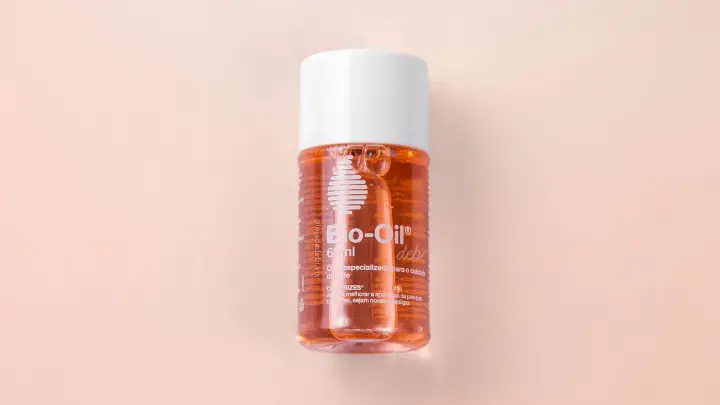Let’s get this out of the way – not all effective skincare products are good for you. Phew, that feels much better. If you are wondering why the emphasis, is simple – the fear of pore-clogging ingredients.
Likely the cause of breakout, pore-clogging ingredients is not what people point to as a cause of skin breakouts. It’s a normal oversight that takes some pointing out from specialists or someone with a wide experience in skincare products and formulas.
Consequently, if you have been experiencing continuous breakouts even with micromanaged skincare routines, here is a good place to start. You will find all you need to know about pore-clogging ingredients and alternatives to using them.
What Are Pore-Clogging Ingredients?
Pore-clogging ingredients, commonly known as comedogenic ingredients, are components that stick the cells of the skin together, causing a block in the pore holes.
Dermatologist, Cynthia Bailey MD, defines comedogenic ingredients as “the cause of cells sticking together, causing a blackhead.”
These ingredients are found in any skincare product including moisturizers, serums, face oils, toners, exfoliators, and even toners. While they may provide a solution to one skin issue, they can also cause the skin pores to clog.
Makeup products are not left out. Skin-clogging ingredients are also present in cosmetic products.
Cynthia Bailey MD further states that a clinical test is the best way to see if an ingredient is compatible with skin types or not. As a result, patch testing new and unfamiliar cosmetic ingredients would help improve your chances of finding what works for your skin and what doesn’t.
Comedogenic ingredients get their origin name from acne comedones. This is a type of acne caused by the cells in the sebaceous duct forming a barrier (cornification) when the sebaceous gland increases sebum production in the skin. They are usually formed when there is a block in the pores and glands.
When the barrier forms in the skin, small skin-colored bumps, also called papules, appear. The bumps often show in the forehead and chin area of the skin.
Most times, the comedones are caused by a block in the skin by debris, cosmetic products, and pore-clogging ingredients.
Common Pore-Clogging Ingredients
While the list of pore-clogging ingredients is generously wide, there are common ingredients you often see in different skincare products. These products are versatile and can fit in simple products like moisturizers or lotions.
The following are common pore-clogging ingredients you should avoid to save your skin from breaking out.
1. Coconut Oil
Used for both skincare and haircare purposes, coconut oil is a moisturizing ingredient that keeps it shiny and supple. The ingredient is also an emollient that seals in moisture in the skin.
Coconut oil has a high likelihood to clog your skin, which is why it is most suitable for dry and scaly skin. Furthermore, the oil provides deep conditioning to the skin, which may lead to blocking the pores or hair shaft. If not washed out, it could lead to residue building in the shaft.
Consequently, oily and acne-prone skin types should stay away from products rich in the versatile ingredient, coconut oil.
2. Cocoa Butter
Yes, this highly moisturizing component contains a high percentage of oleic and stearic acid that clogs the pores. Cocoa butter helps to moisturize and maintains the softness of the skin. The skin benefits from this ingredient.
As a result, you will find this component in moisturizers, creams, and hydrating formulas. However, it is not suitable for oily and acne-prone skin. This is due to its thick texture, which may clog your skin. As a result, you should avoid this pore-clogging butter.
3. Wheat Germ Oil
With a rate of 5 on the comedogenic scale, this oil might be beneficial to the skin when consumed or applied to the skin. However, it is not suitable for easily clogged skin. If you also have open pores, stay away from this oil.
Moreover, it is best used for very dry and damaged skin in need of a deep moisturizing solution.
4. Soybean Oil
Soybean oil also ranks high on the comedogenic scale, due to its linoleic acid, which is a fatty acid. The oil, although it helps the skin, it does contain unsaturated fat that is stored in the pores, as a result, keeping the pores clogged. The oil is however good for extremely dry skin.
5. Carrot Seed Oil
Used for anti-aging purposes, this oil contains a high amount of oleic acid. Nonetheless, it does help the skin in reviving its complexion and soothe irritated skin. However, it leaves residue in the pores, keeping them clogged.
In addition, the high amount of oleic acid makes the oil a high risk for breakouts for oily and acne-prone skin types.
6. Coconut Butter
Anything coconut has a high amount of oleic acid and stearic acid, which clogs skin pores. The butter helps to enrich the skin and keep it supple. However, it poses a risk for acne-prone skin. You can use it in treating your dry or chapped lips but can lead to comedones on the skin, especially the face.
7. Moringa Oil
Moringa oil is also rich in stearic acid and oleic acid. It has moisturizing properties that keep the skin supple. In addition, it has antioxidants that keep the skin protected from environmental aggressors.
However, it is rich in unsaturated fat, which may pose a problem for your skin. The pore-clogging effects depend on your skin features. If you have sensitive, acne-prone, or oily skin that reacts to little things, you should avoid this oil.
8. Palm Oil
Palm oil, in its raw red form or processed form, helps the skin stay protected due to its antioxidant properties. The oil is rich in unsaturated fat that keeps your skin and hair moisturized. It is also rich in vitamin E which acts as a protective agent.
Nonetheless, it is rich in oleic acid, which blocks the pores, creating papules and breakouts. While skin in need of moisture can use it, oily and acne-prone skin types should avoid products with this pore-clogging ingredient.
9. Marula Oil
Marula oil has skin-lightening properties. It also helps to smoothen and soften your skin texture. It is also a great shield against environmental aggressors and sun damage. Consequently, the oil is beneficial to age and dry skin types.
However, it is rich in oleic acid, which is unsaturated fat. This could lead to clogged pores. Moreover, the oil is lightweight and absorbs into the skin faster than most oils. As a result, it can only clog your pores based on how reactive your skin is.
10. Lanolin
This includes acetylated lanolin alcohol, acetylated lanolin, anhydrous lanolin, and lanolin wax. These lanolin ingredients contain moisturizing properties that keep the skin in a hydrated state. However, they can clog the pores.
The properties can cause breakouts for acne-prone skin types. You will find these lanolin ingredients in makeup products.
11. Algae Extract
This is another makeup ingredient that causes the skin to become clogged. The ingredient contains anti-inflammatory properties that soothe the skin and balance out the oil in your skin.
Regardless, the extracts clog the pores at the same time. As a result, you need to be careful when using this product.
12. Lauric Acid
This fatty acid can be found in some natural products like coconut oil. It can also be extracted and made into a component. The acid helps to reduce inflammation and bacteria in the skin.
However, while the acid helps in battling acne on the skin, it can also clog the skin. You can call it a double-edged sword. Additionally, the reactions are not immediate. The acid builds up slowly in the skin until it oxidizes.
13. D/C Red Dyes
These are the categories of dye found in makeup and colored skincare. As derivatives of coal tar, these dyes stick to the skin pores after application. Consequently, you need to protect your skin regularly.
14. Sodium
All types of sodium (not required in some products) are comedogenic. Sodium is present in soaps and some exfoliating scrubs to remove dead skin; meanwhile, they clog the skin pores.
When sodium clogs the skin, it causes breakouts in the skin. As a result, you need to wash your face properly to avoid clogging your pores with them.
15. Jojoba Wax
Not to be confused with jojoba oil, jojoba wax is a thick component that moisturizes the skin. The wax is also gotten from the jojoba ester to provide suppleness to the skin and hair. However, the wax sticks to the pores, closing them up.
Non-Comedogenic Ingredients
Unlike pore-clogging/comedogenic ingredients, non-comedogenic ingredients do not clog the pores. Rather, they slip easily into your pores to provide the necessary nourishment the skin needs.
Popular non-comedogenic ingredients you will find in cosmetic products include:
- Jojoba oil: This oil is great for most skin types due to its mimicry of the natural sebum in the skin.
- Kiwi seed oil: This oil helps to hydrate the skin.
- Shea butter: This butter moisturizes the skin and keeps it soft. You will find it mostly in moisturizers.
- Castor oil: This is another moisturizing oil that works as a carrier oil for essential oils.
- Grapeseed oil: This oil is versatile and helps to hydrate and soften your skin. It can be found in moisturizers, serums, and creams.
- Hazelnut oil: This is another moisturizing oil that soothes the skin. It is great for calming sensitive skin.
- Aloe vera: This humectant draws moisture to the skin without clogging your pores.
- Squalene: This is an oil-balancing ingredient used for controlling the excess sebum on your face.
- Meadowfoam seed oil: This oil helps the skin control sebum. It is lightweight and nourishing. You will find it in creams and moisturizers.
- Salicylic acid: This acid helps to remove excess sebum and dead skin cells. As a result, you will find it in exfoliating and cleansing skincare products.
- Green tea: It is rich in antioxidants to soothe the skin.
- Rosehip seed oil: This oil is one of the most popular oils for anti-aging treatments. It is found in toners to moisturizers to provide the necessary nutrition and hydration the skin needs.
- Benzoyl peroxide: This is an acne-controlling ingredient used in renewing skin surfaces and improving natural skin tone.
How to Avoid Pore-Clogging Ingredients
Stay away from unknown products with unknown ingredients
If you are not sure of a product’s active ingredient, you should avoid such a product. Having numerous products in the market makes it much harder to find a suitable product. The best way to remove half of the product options is to stick to what works best – tested and trusted ingredients.
Buy a product labeled non-comedogenic
When you see a certified label stating a product is non-comedogenic, it means the ingredients will not clog your pores to lead to another breakout.
Avoid wearing too much makeup
Avoid wearing makeup all the time to avoid the ingredients and dyes clogging your pores. It is also important to cleanse your face before sleeping. This would remove the residue stuck in your pores.
Frequently Asked Questions
Can you still use products with pore-clogging ingredients?
Yes, you can. While pore-clogging ingredients will likely lead to breakouts, some skin types can still use these ingredients.
For instance, dry skin will benefit from thick oils and butter to provide long-lasting moisture or hydration to the skin.
Do pore-clogging ingredients have side effects?
Mostly acne breakouts. Using pore-clogging ingredients will likely lead to breakouts and slight irritation. However, they do not lead to life-threatening side effects.
Nonetheless, some people might experience serious side effects if they are allergic to some of the ingredients. On that end, you should patch-test the products before using them.
Are non-comedogenic ingredients good for everyone?
Yes, they are. Non-comedogenic ingredients are good for all skin types because they are versatile ingredients that suit most skin features.
Conclusion
Before picking any product up, look for the label non-comedogenic; it is saving you from a skincare setback. Experiencing breakouts for unknown reasons usually boils down to the products you use, and the target- pore-clogging ingredients.
Knowing these ingredients will save you the heartache of having to change products and regimens. Not that you have to cram all possible pore-clogging ingredients. However, starting with these popular ones is a beginner.
So, always be on the lookout for these ingredients, especially if you are oily and acne-prone skin type.
Thanks for reading.
Serum101 provides relevant skincare answers to improve your skincare routines.






